Strong Shapes, Vivid Lines, Big Color
June 15, 2020
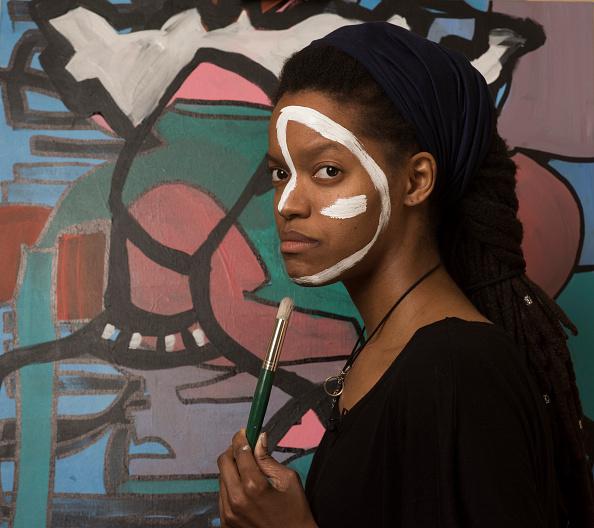
The Vision & Art Project interviews Erika Marie York.
Artist Erika Marie York, 30, was in elementary school when she was diagnosed with Stargardt disease, a juvenile form of macular degeneration that leads to vision loss. Her parents are artists, and encouraged her to take drawing and painting classes during high school. But she didn’t become a serious artist until after she graduated from Smith College with a degree in sociology in 2012. She sees her vision (loss) and art as being inextricably interdependent.
York says that if she didn’t have Stargardt, she can’t imagine what her paintings would look like. Their signature qualities—large canvases, bold lines, bright colors, figures often lacking facial features or wearing glasses—are largely shaped by her eye condition. These very same qualities give her figural-based paintings a powerful graphic impact.
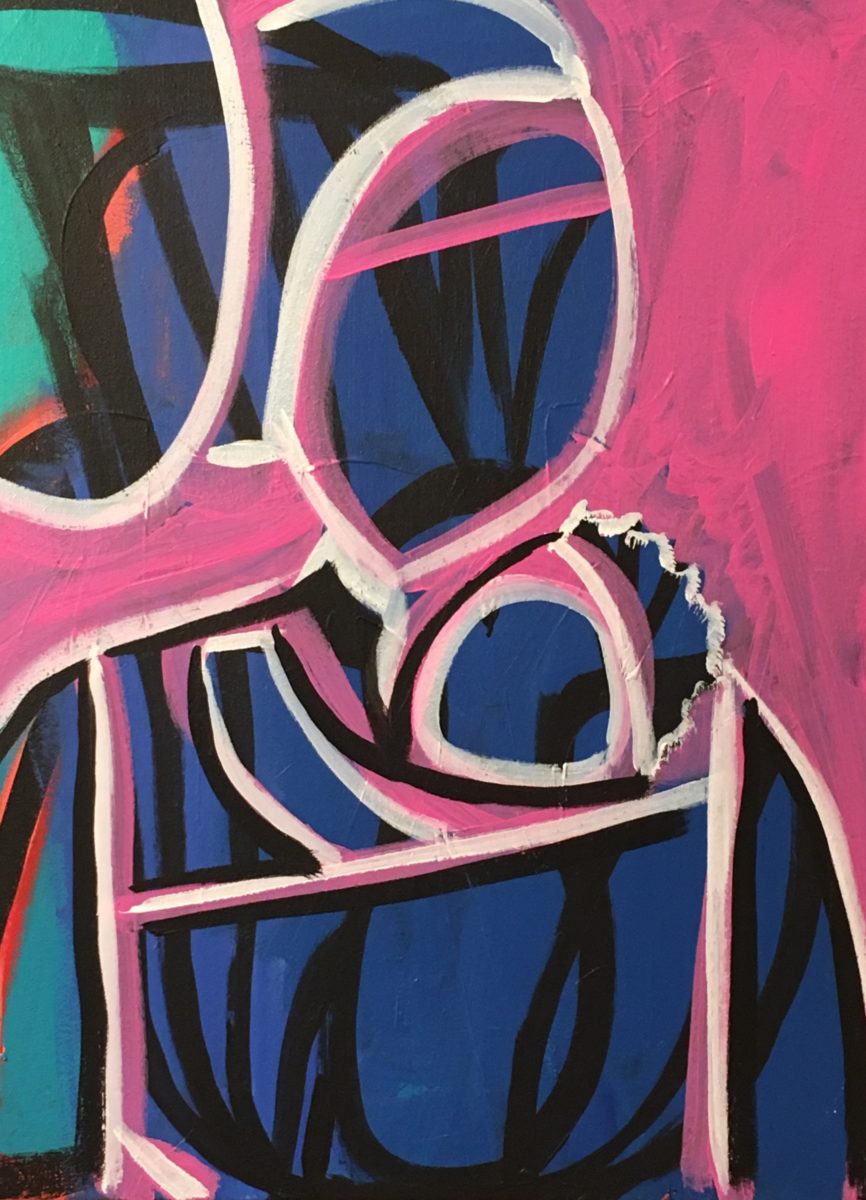
A low-vision artist
As a low-vision artist, people sometimes ask how she can create art if she can’t see very well. “I think that’s the weirdest question ever,” she says, “because creating art is supposed to be about your unique perspective, and this is my perspective. I don’t understand what being able to see has to do with it, because even if a person were completely blind, they’d still be able to create art from their perspective. Creating art isn’t only for able-bodied people.”
York has shown her work in group shows organized by the Columbia Lighthouse for the Blind (Washington, D.C.). The Washington Post has featured her work. Like most people who create art, York says that her dream is to eventually work full-time as an artist. She’d also like to start working on murals.
Because of Covid-19, we conducted the following interview with York online, instead of doing as we normally would and visiting her in her studio.
Interview: Erika Marie York
Recent career
A’Dora Phillips: You’re an emerging artist. What are some highlights from your recent career?
Erika Marie York: Recently I’ve done a few shows with Columbia Lighthouse for the Blind where they showcase visual art created by artists with low vision.
Phillips: What is your studio and workday like?
York: I have a day job that helps me finance my art. I usually dedicate a little time during the work week to art. I can usually carve out an hour a day over the course of a whole day and reserve my long stretches of painting for the weekends.
My studio is in my home, so I’m never too far away from art supplies. Lately I’ve been leaning more towards digital art, which allows me to try out different techniques without having to buy new supplies every time I have an idea. Another perk of using digital art is that I can zoom in really close so that I can see what I’m doing. As an artist with low vision there are techniques that just don’t work for me because I can’t see what I’m doing, but with digital art I can zoom in and get those fine details that I just can’t achieve with paint and a canvas or pen and paper.
Early vision loss and interest in art
Phillips: Can you tell me about your background?
York: I’m thirty years old. I grew up in Maryland. I’ve always been interested in art because my parents are artists. I decided to pursue art mainly because they saw something in me and encouraged me to continue. I decided to start doing art shows and selling my art when I finished college. I’d just graduated from college and had plenty of time to dedicate to painting, so that’s what I did. I painted from morning to night.
Vision loss
Phillips: When did you start to lose your vision? Can you tell us a little bit about that experience?
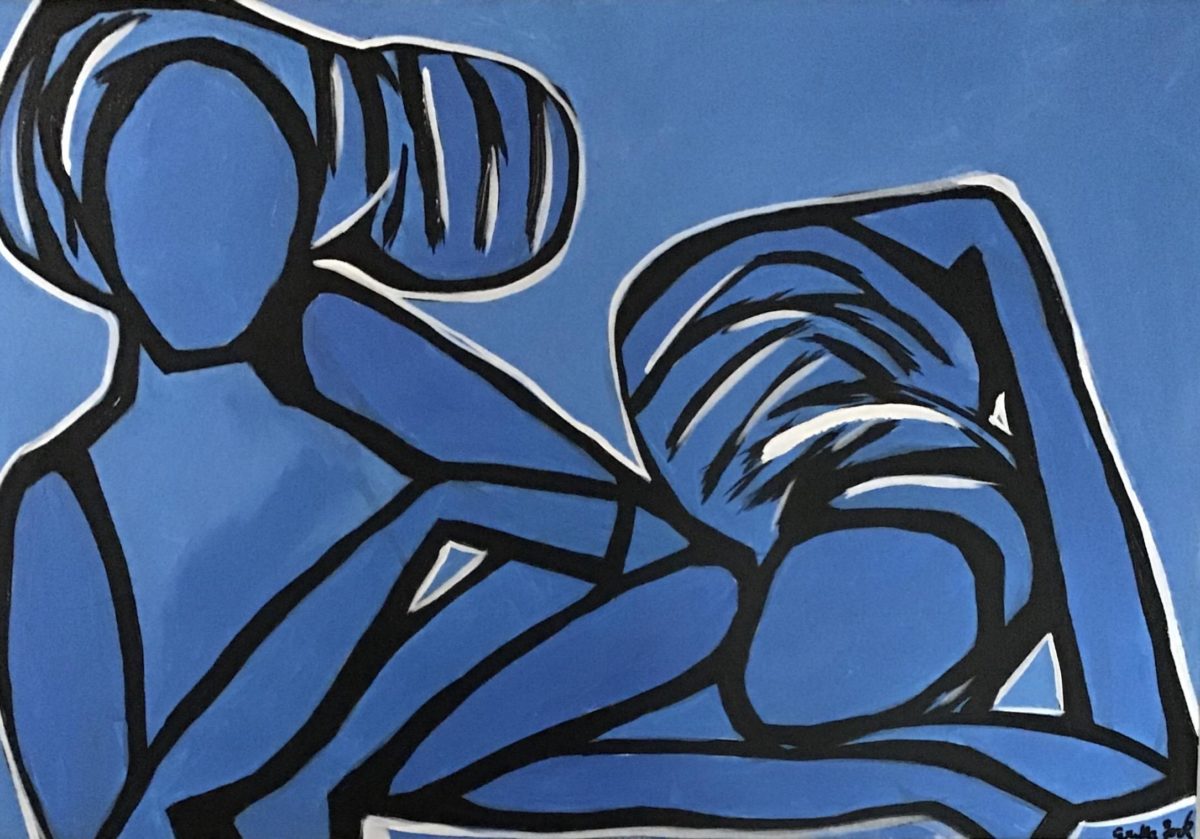
York: I always wanted glasses because my whole family has glasses, so I already had a pair with a very slight prescription, but I really didn’t need them. I started to lose my vision in elementary school. Towards the end of fifth grade I started to need my glasses. I think I was diagnosed with Stargardt’s in sixth grade.
It was really difficult because I didn’t know what was going on. It seemed like all of a sudden I couldn’t see the board in class and I needed help seeing things. I hated being different from everyone else. It did get easier as I realized that having low vision was my new normal. I learned to cope with my vision loss. Now I’m used to it. My vision is stable and I don’t think about my vision loss anymore. In my teenage years, I was consumed by it and felt very anxious about all the things I couldn’t do, but now I’m okay. I learned to cope and to focus on what I can do.
Artistic training
Phillips: How did you train to become an artist? Is there anything in particular that stands out from your training? A teacher? Advice that was impactful?
York: I took art classes throughout high school and I took one art class in college. What I learned in art class in high school was impactful because it taught me that I could do whatever I wanted with art. My version of a still life was way more abstract than the teacher expected, and I was rewarded for that. My version of a still life was different, and my high school art teacher encouraged that. I think that’s the best lesson that I learned.
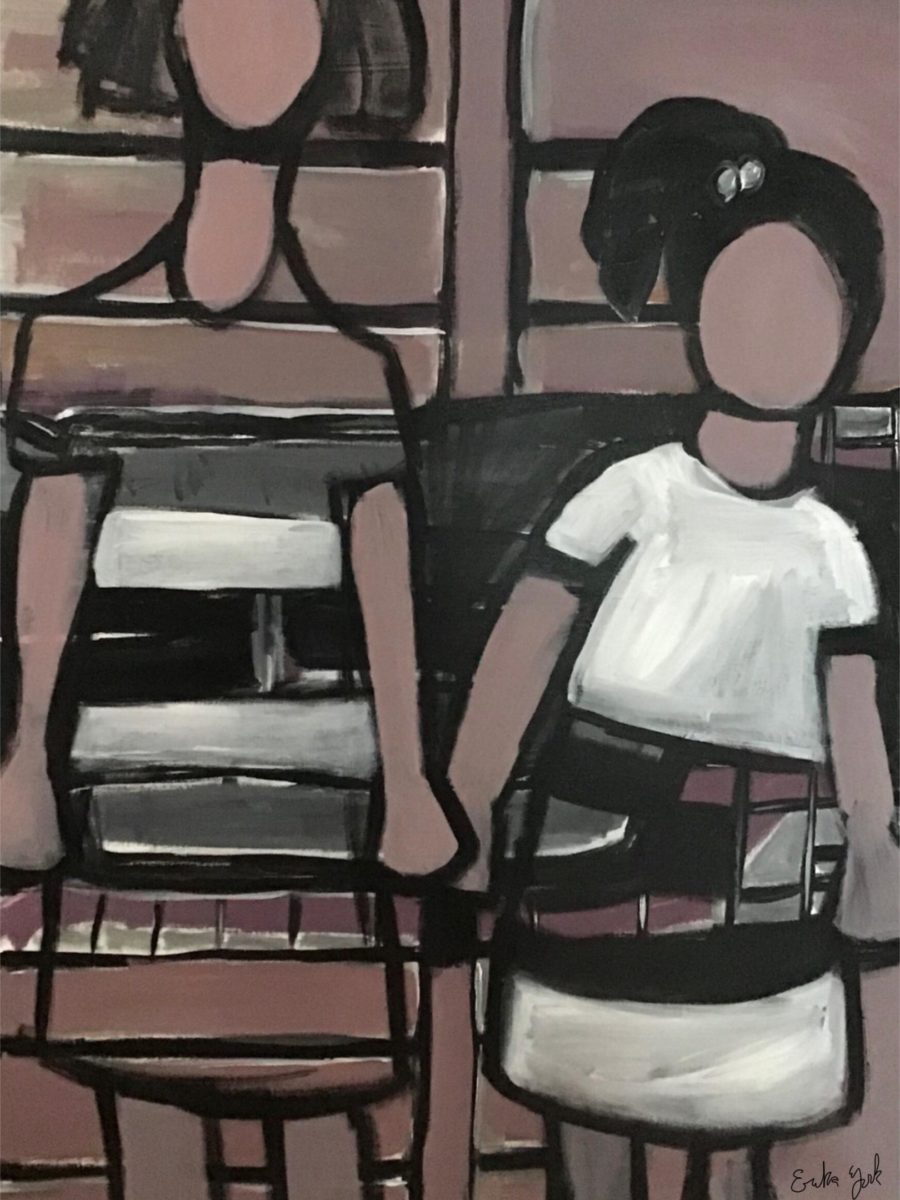
Phillips: Were you already training to be an artist when you learned you had Stargardt disease?
York: I was already drawing and doing other creative things, but I didn’t really start painting until I was thirteen and already dealing with my vision loss.
Phillips: You studied sociology at Smith—what drew you to sociology, and have your studies in sociology impacted your art in any way?
York: Sociology taught me how to think critically about everything. In sociology, there’s always something to unpack.
I don’t like to plan things when it comes to my art, I don’t like to explain or even title most of my artwork because I want the audience to draw their own conclusions. If I titled a painting “The Story of the Color Red,” the audience is going to only think about that. I want my art to mean different things to different people regardless of what it means to me. In my art there’s always something to unpack, but I want the audience to do that for themselves using their experiences and their perspective.
“My paintings are inspired by what I see”
Phillips: Your paintings have a powerful graphic effect. It’s impossible to know from them alone that you suffer from vision loss. What part, if any, does vision loss play in your role as an artist?
York: My vision loss is the reason I work with large canvases and bright colors. I have to be able to see what I’m doing and I want other people to be able to see my work from far away.
Phillips: Are your paintings created from memory, imagination, direct observation? From some combination of the three? From something else altogether?
York: My paintings are inspired by what I see. I don’t like to plan anything because that never works for me. I sit down to paint and whatever happens happens.
Phillips: In what way does vision loss impact your working methods and technique? For example, do you use any special tools or aids in the studio, such as a magnifying glass?
York: I don’t use any visual aids when I paint. I don’t even wear my glasses when I paint.
Phillips: Do you find are any advantages to vision loss?
York: I’m not sure if there are advantages to my vision loss. I think my vision has shaped my style and I’m thankful for that, so I consider that to be a benefit.
Phillips: What are the challenges of vision loss and how do you overcome them?
York: There are some things that I don’t do because of my vision loss. For example, portraits. I don’t draw or paint realistic faces or people because I have trouble seeing facial features and recognizing people. Everything I do is abstract at least a little because I can’t see the details and make the tiny brush strokes that make up a face.
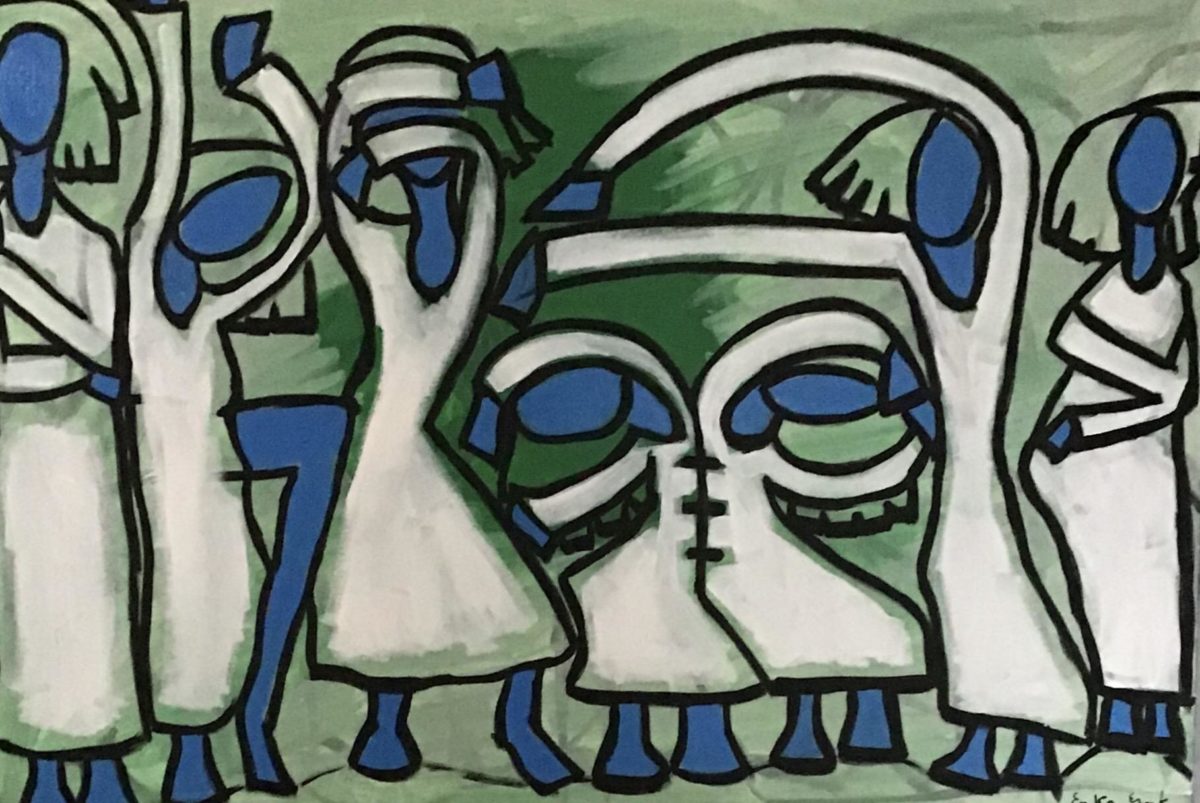
Influences and Inspirations
Phillips: Who / what are your main influences as an artist?
York: I really enjoy Jean Michel Basquiat and Keith Haring. I also really like Frida Kahlo. I also take inspiration from books and movies. My favorite book and movie is Requiem for a Dream.
Phillips: Where does your inspiration come from?
York: My inspiration comes from what I can see. Sometimes it’s something that I read or watched. Sometimes I feel inspired by a color. Everything comes together when I sit down to paint.
Phillips: How do you know when a painting is done?
York: I can’t describe it. When I feel it’s done, it’s done.
Erika M. York’s work is for sale on her Etsy site.

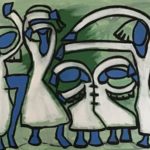
Comments
Your paintings are Beautiful !!!! You are extremely talented and your artwork is very unique !!!!! Great pieces !!!
i feel some of comment are the same as mine.I also haVER LOW VISION LOSS AND LIKE YOURSELF ALSO AN ARTIST.A LOT OF DRAWING ARE ALSO ABSTRATE I ALSO HAVE BOTH WET AND DRY MUSCLAAR DEGERATIVE IN RIGHT EYE.LOST VISION IN MY RIGHT EYE,BECAUSE OF THE DISEASE
I was mystified to think that someone with impaired sight could paint so well. You are truly talented and we are lucky to be able to see your work. Thank you for sharing
Leave a Comment